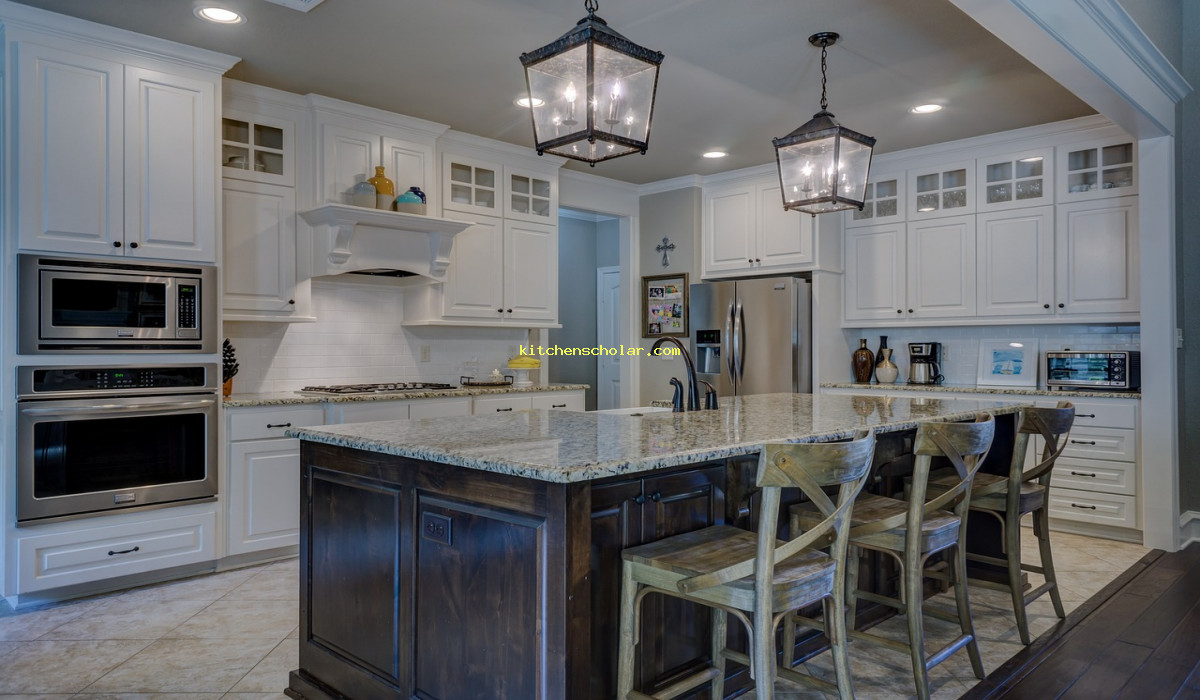Revamp Your Kitchen: 5 Tips for Painting Kitchen Cabinets – Kitchen Scholar. Discover the secret to transforming your kitchen with a fresh new look 5 Tips for Painting Kitchen Cabinets!
5 Tips for Painting Kitchen Cabinets
Learn all about painting kitchen cabinets from our expert at Kitchen Scholar. Create a stunning space on a budget with our simple tips and techniques. Follow our guide and give your kitchen a whole new vibe!
Revamp Your Kitchen: 5 Tips for Painting Kitchen Cabinets – Kitchen Scholar. Kitchen Scholar Create Revamp Your Kitchen: 5 Tips for Painting Kitchen Cabinets – Kitchen Scholar
Can Kitchen Cabinets Be Painted? A Beginner’s Guide
Kitchen cabinets are an essential part of any kitchen, providing storage and adding to the overall aesthetic of the space. But what happens when your cabinets start to look dull or outdated? Should you replace them completely or is there a more budget-friendly option? The good news is that kitchen cabinets can be painted, and it is a relatively simple DIY project that can transform the look of your entire kitchen. In this blog post, we will explore the process of painting kitchen cabinets, including tips and tricks to achieve a professional-looking finish.
Why Paint Kitchen Cabinets?
Many homeowners find themselves in a dilemma when their kitchen cabinets no longer fit their style or color scheme. Replacing kitchen cabinets can be a costly and time-consuming project. Plus, if your cabinets are still in good condition, it seems wasteful to get rid of them.

This is where painting your kitchen cabinets comes in as a great alternative. Not only is it much more budget-friendly, but it also allows you to personalize the look of your cabinets to match your style and preferences.
What You Will Need
To successfully paint your kitchen cabinets, you will need the following supplies:
– Screwdriver or drill to remove cabinet doors and hardware
– Sandpaper or deglosser to prep the cabinets
– TSP or other degreasing cleaner to ensure the surface is clean
– Painter’s tape to protect walls and other surfaces
– Drop cloths or plastic to protect your floors and countertops
– Latex or oil-based paint in your desired color and finish
– Primer for better paint adhesion
– Paintbrushes and rollers
– Optional: spray gun for a smoother finish
Preparing the Cabinets
The key to a successful cabinet painting project is proper prep work. This is the most time-consuming part of the process, but it will ensure that the paint adheres well and provides a long-lasting finish. Here are the steps to follow:
1. Remove all hardware from the cabinets, including knobs, pulls, and hinges. Place them in a labeled bag for easy reinstallation.
2. If your cabinets have a glossy finish, you will need to sand them down to create a rougher surface. If you have oak cabinets, it is recommended to use a deglosser instead of sanding.
3. Clean the cabinets thoroughly with a degreasing cleaner, such as TSP. This step is crucial as it will remove any grease or grime that can affect the paint’s adhesion.
4. Use painter’s tape to protect the walls, floors, and other surfaces around the cabinets.
5. Lay down drop cloths or plastic to protect your floors and countertops.
6. If using a spray gun, practice on a piece of cardboard or scrap wood to get the hang of it before painting the cabinets.
Priming and Painting
Once your cabinets are prepped and the area is protected 5 Tips for Painting Kitchen Cabinets, it’s time to start priming and painting. Here’s how to do it:
1. Prime the cabinets with a quality primer. This step is essential, especially if you have dark cabinets or want to switch to a lighter color. It will ensure better paint adhesion and prevent the original color from bleeding through.
2. Let the primer dry completely before moving on to the next step. Refer to the manufacturer’s instructions for drying time.

3. Once the primer is dry, it’s time to start painting. Use a high-quality paintbrush or roller to apply thin coats of paint, allowing each coat to dry before applying the next one. This will ensure a smooth and professional-looking finish.
4. If using a spray gun, follow the manufacturer’s instructions for thinning the paint and apply thin coats, making sure to cover all areas evenly.
5. Let the cabinets dry completely, usually 24-48 hours, before reinstalling the hardware and hanging the doors.
Tips for a Professional-Looking Finish
– Use paint with a gloss or semi-gloss finish for easier cleaning and durability.
– Use a separate brush for painting corners and crevices, and another one for flat surfaces.
– Make sure to paint in a well-ventilated area and wear a mask to avoid inhaling fumes.
– Sand lightly between each coat for a smooth finish.
– If your cabinets have a wood grain, consider using a wood grain tool, or create a faux wood grain effect with a dry brush technique.
– Take your time and be patient. Rushing the process can result in a less-than-perfect finish.
5 Tips for Painting Kitchen Cabinets
What is the best paint for kitchen cabinets?
The best paint for kitchen cabinets is a high-quality latex or oil-based paint 5 Tips for Painting Kitchen Cabinets. Make sure to choose a finish that is durable and easy to clean, such as gloss or semi-gloss.
Can I paint over laminate or melamine cabinets?
Yes, you can paint over laminate or melamine cabinets 5 Tips for Painting Kitchen Cabinets, but the prep work is crucial for adhesion. You may also need a special primer designed for these materials.
Do I need to sand my cabinets before painting?
If your cabinets have a glossy finish, sanding is necessary to create a rougher surface for better paint adhesion. If you don’t have glossy cabinets, you can use a deglosser instead of sanding.
In Conclusion
Painting kitchen cabinets is a great way to update the look of your kitchen without breaking the bank. With proper prep work and the right supplies 5 Tips for Painting Kitchen Cabinets, anyone can achieve a professional-looking finish. Follow our tips and you’ll have a brand new kitchen in no time!
5 Tips for Painting Kitchen Cabinets
Discover the secret to transforming your kitchen with a fresh new look! Learn all about painting kitchen cabinets from our expert at Kitchen Scholar. Create a stunning space on a budget with our simple tips and techniques. Follow our guide and give your kitchen a whole new vibe!. cabinets Revamp Your Kitchen: 5 Tips for Painting Kitchen Cabinets – Kitchen Scholar
Can kitchen cabinets be painted without sanding?
Yes, it is possible to paint kitchen cabinets without sanding, but it is not recommended 5 Tips for Painting Kitchen Cabinets. Sanding helps to create a rough surface for the paint to adhere to, ensuring a smoother and longer-lasting finish. Without sanding, the paint may chip or peel off more easily over time.
What is the best type of paint to use for kitchen cabinets?
The best type of paint for kitchen cabinets will depend on your specific needs and preferences. However 5 Tips for Painting Kitchen Cabinets, many experts recommend using a high-quality, durable paint that is specifically designed for kitchens and cabinets. Some popular options include acrylic, latex, or oil-based paint.
Can kitchen cabinets be painted white?
Yes, kitchen cabinets can be painted white. In fact 5 Tips for Painting Kitchen Cabinets, white cabinets are a popular option for those looking to brighten up their kitchen and create a clean, modern look. However 5 Tips for Painting Kitchen Cabinets, it is important to properly prepare the cabinets and use the right type of paint for a successful and long-lasting finish.
Is it necessary to prime kitchen cabinets before painting?
In most cases, it is recommended to prime kitchen cabinets before painting, especially if they are made of wood. Priming helps to create a smooth and even surface for the paint to adhere to 5 Tips for Painting Kitchen Cabinets, and can also help to prevent stains and wood tannins from bleeding through the paint.
Can I paint over laminate kitchen cabinets?
Yes, you can paint over laminate kitchen cabinets, however, it may require some extra preparation and special techniques. Laminate is a slick and non-porous surface, so it is important to clean and lightly sand the cabinets before priming and painting. You may also want to use a bonding primer to help the paint adhere to the laminate surface.
